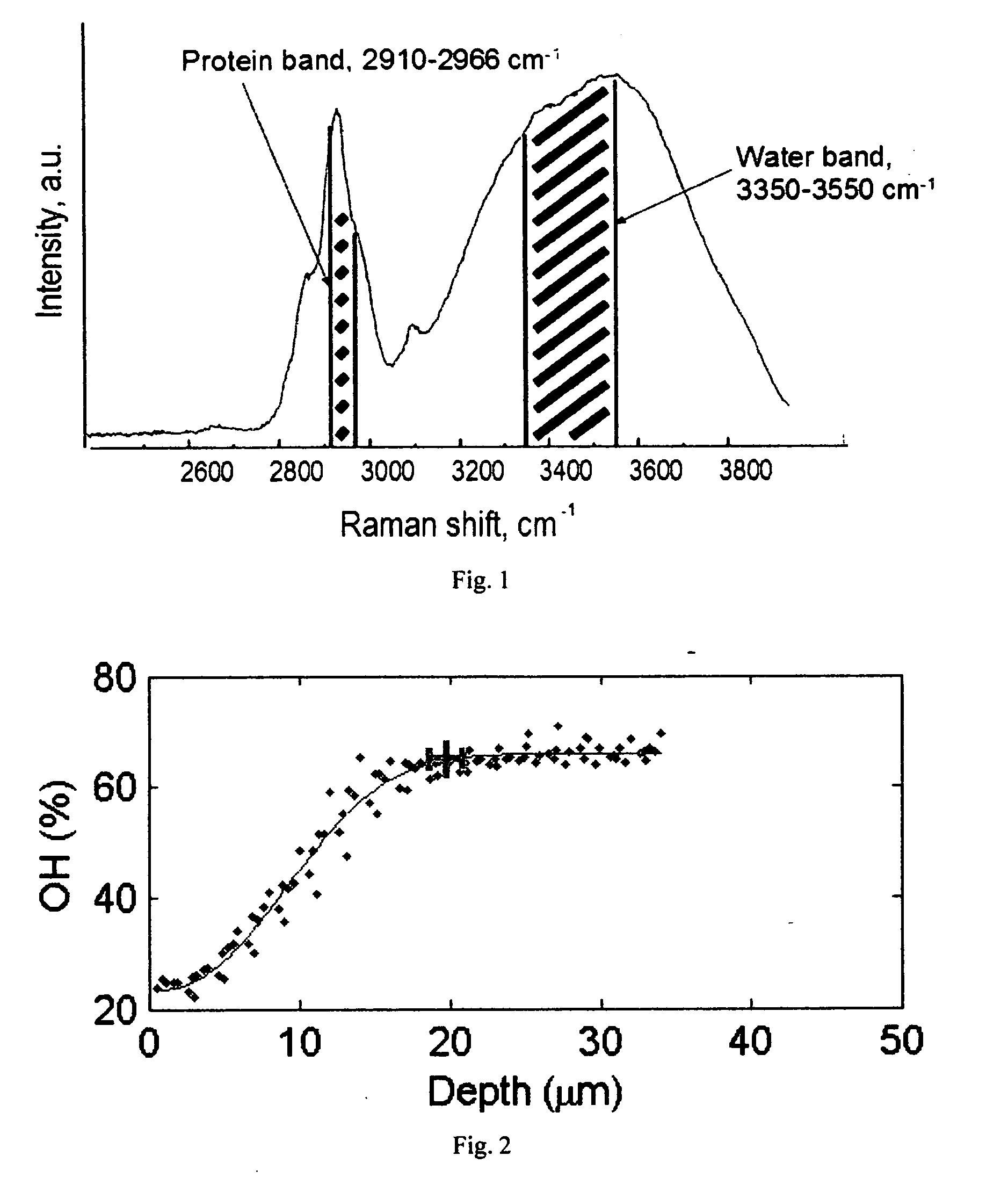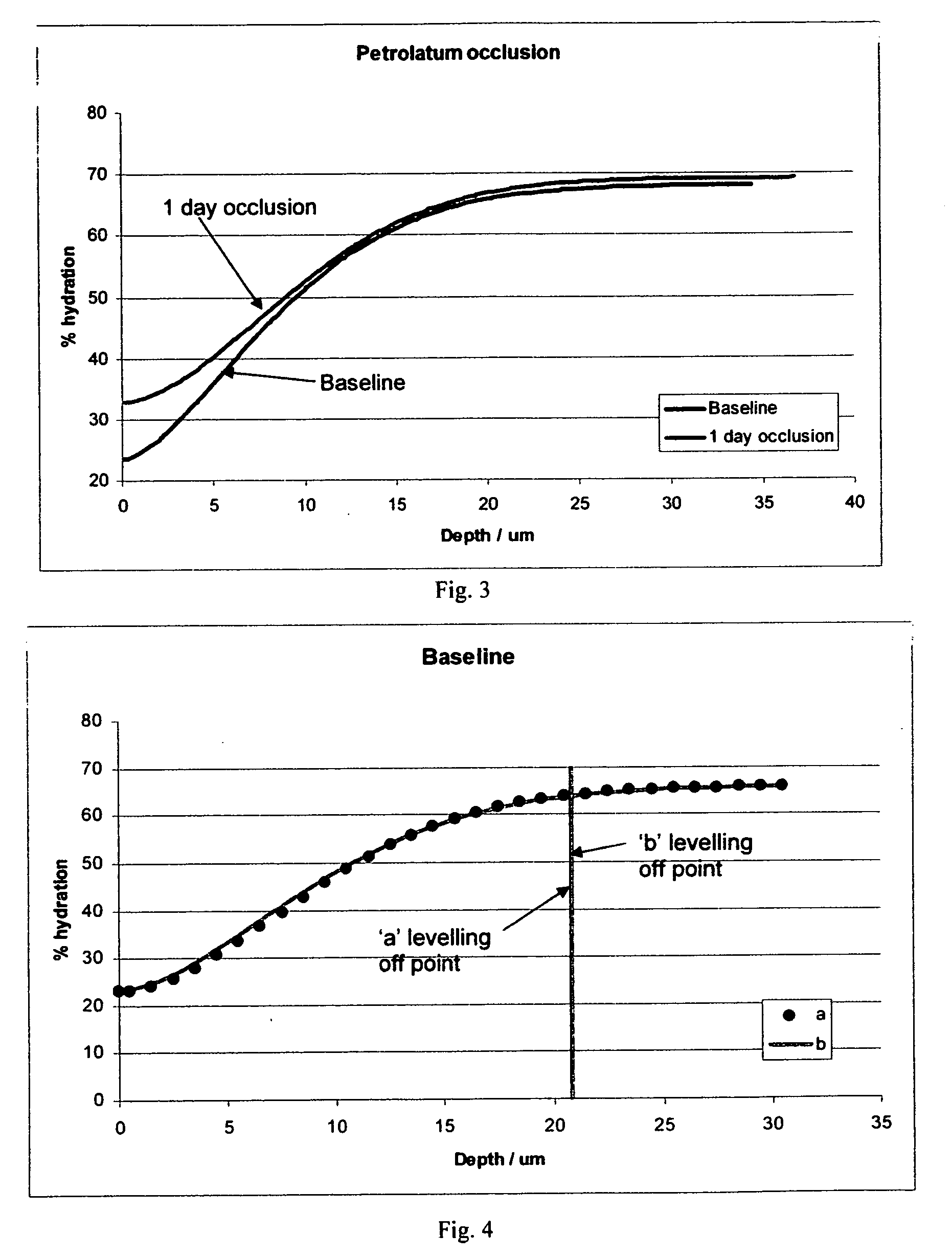Confocal Raman Spectroscopy for dermatological studies
a raman spectroscopy and dermatological research technology, applied in the field of raman spectroscopy for dermatological research, can solve the problems of inability to get information, inability to quantitatively measure the technique, and inability to collect data, so as to achieve the effect of increasing the total hydration of the skin
- Summary
- Abstract
- Description
- Claims
- Application Information
AI Technical Summary
Benefits of technology
Problems solved by technology
Method used
Image
Examples
example 1
Single Variable Analysis of Hydration Levels within the Skin—Petrolatum Occlusion
[0051] To demonstrate the effects of a single variable on skin hydration, a set of baseline spectra were recorded (the site to be used was dry wiped to remove surface sebum before the measurements were taken). Petrolatum was then applied to the same area of the forearm 4 times over a 24 hour period with the aim of promoting skin hydration via occlusion. After 24 hours the site was dry wiped to remove any surface contamination and a further set of profiles collected (FIG. 3). This shows how the hydration level near the surface of the SC has increased due to occlusion (x=0 to 5 μm). Also the total area under the curve from the surface to the bottom of the SC has increased from 697 to 764—an increase of approximately 10%.
example 2
Effect of Moisturizing Products
[0052] In this study, two commercial moisturizing treatments (‘a’—Olay® Quench, and ‘b’—Jergens® Ultra Healing) were used. After an initial baseline reading product, the products were applied for 2 weeks followed by a 1 week regression period during which no product was applied to the sites examined. Product application was 2 μl cm−2, twice daily, over sites on the volar forearms of 15 panelists. Panelists did not use moisturizing products other than those provided by the study organizers on their forearms over the entire course of the study. The baseline profile for skin hydration at the beginning of the study (no products applied) is shown on FIG. 4. As shown, the baseline profile for both sites ‘a’ and ‘b’ were identical.
[0053] The change in % hydration for the two moisturizing treatments ‘a’ and ‘b’ at the fixed depth of 10 μm data beneath the surface of the SC is given in FIG. 5. Looking at the data in FIG. 5, treatment ‘a’ appears to be resulti...
PUM
 Login to View More
Login to View More Abstract
Description
Claims
Application Information
 Login to View More
Login to View More - R&D
- Intellectual Property
- Life Sciences
- Materials
- Tech Scout
- Unparalleled Data Quality
- Higher Quality Content
- 60% Fewer Hallucinations
Browse by: Latest US Patents, China's latest patents, Technical Efficacy Thesaurus, Application Domain, Technology Topic, Popular Technical Reports.
© 2025 PatSnap. All rights reserved.Legal|Privacy policy|Modern Slavery Act Transparency Statement|Sitemap|About US| Contact US: help@patsnap.com



